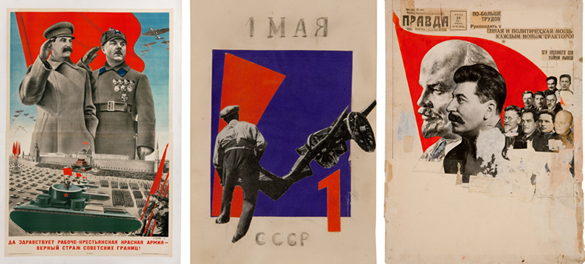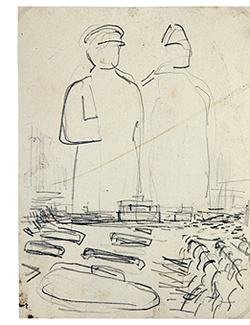| Sun | Mon | Tue | Wed | Thu | Fri | Sat |
|---|---|---|---|---|---|---|
| 1 | 2 | 3 | 4 | 5 | ||
| 6 | 7 | 8 | 9 | 10 | 11 | 12 |
| 13 | 14 | 15 | 16 | 17 | 18 | 19 |
| 20 | 21 | 22 | 23 | 24 | 25 | 26 |
| 27 | 28 | 29 | 30 | 31 |
CATEGORIES
RECENT ENTRIES
BLOG ROLL
Red October
Soviet propaganda comes to Chicago.
By Elizabeth Station

As a kid, I wept through Dr. Zhivago and Reds. During the Sandinista years, I rode buses around Nicaragua to glimpse the revolution. Later, on a trip to Moscow, I had to visit Lenin’s body in Red Square. It was rumored he was wearing a new Armani suit—and since the Soviet Union had just fallen, we had the mausoleum to ourselves.
Socialism is so 20th century, but I’m still a pushover for big red posters. Lucky for fans, Soviet art is on display in museums all over the city, as part of the Soviet Arts Experience festival. An intimate show called Process and Artistry in the Soviet Vanguard, now at the Smart Museum of Art, features works by Gustav Klucis and Valentina Kulagina, a husband and wife team who created public art for the Soviet government during the 1920s and '30s.
 What is most interesting about the show—conceived as a companion to the Smart’s concurrent Vision and Communism exhibition—is its attention to artistic process. Klucis and Kulagina combined photo montage techniques with abstract graphic design; many posters are displayed with the photographs, newspaper clippings, and early sketches that the artists used to create the works. “This is where cutting and pasting started,” says Kimberly Mims, an art-history PhD student who curated the exhibition. “The artists were very experimental, and they freed themselves to work with photography in whatever way they wanted.”
What is most interesting about the show—conceived as a companion to the Smart’s concurrent Vision and Communism exhibition—is its attention to artistic process. Klucis and Kulagina combined photo montage techniques with abstract graphic design; many posters are displayed with the photographs, newspaper clippings, and early sketches that the artists used to create the works. “This is where cutting and pasting started,” says Kimberly Mims, an art-history PhD student who curated the exhibition. “The artists were very experimental, and they freed themselves to work with photography in whatever way they wanted.”
Politically, of course, Soviet artists weren't free. Under Stalin, semi-autonomous artists’ collectives were disbanded and artists came under central party control. Without awareness of their process, it would be easy to write off the work as agitprop or kitsch. One poster exhorts Communist Party youth to pitch in and help peasants on collective farms; another celebrates happy rural workers and their tractors. The once-stirring slogans ring hollow: “The USSR is the Shock Brigade of the World Proletariat!” “Higher the Banner of Marx, Engels, Lenin, and Stalin!” “Male and Female Workers all to the Election of the Soviets!”
That doesn’t mean that art from this period lacks value. “The hook for me, and maybe for a younger audience that’s computer literate, is that this show offers a chance to see what came before,” says Mims. Today with the click of a mouse anyone can send photos, alter an image, or cut and paste copy—but in the 1920s, photo montage was entirely new. “Of course for the Soviets, the dream was for everything to be automated,” adds Mims, “but they were in a handmade world.”
October 3, 2011
